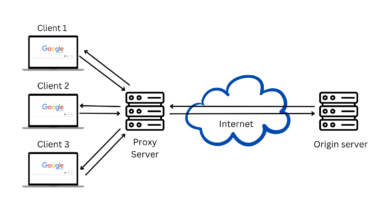
How Do Automated Tests Ensure Web Application Security and Reliability?
Automated tests play a crucial role in securing and maintaining the reliability of web applications. By continuously running a series of tests, automated tools capture vulnerabilities, bugs, and performance issues efficiently. These tools help developers detect and address issues that could compromise the safety and functionality of an application. Here’s a closer look at how automated web app testing contributes to the security and reliability of web applications.
Table of Contents
Consistent and Regular Testing
Automated tests provide consistent, routine testing every time there’s a change in the code. Scheduling tests to run regularly ensures that potential security vulnerabilities and reliability issues are caught early, long before they affect end-users. This continuous testing process is essential to maintaining application security and reliability over time, creating a strong foundation for secure, stable software.
The ongoing monitoring provided by automated testing supports proactive maintenance, allowing developers to address potential issues quickly, reducing the chance that these vulnerabilities could escalate into larger problems.
Early Detection of Security Vulnerabilities
Automated security testing, through methods like Static Application Security Testing (SAST) and Dynamic Application Security Testing (DAST), scans codebases and running applications for known vulnerabilities. These tools detect critical security issues, such as SQL injection and Cross-Site Scripting (XSS), early in the development process. Early detection enables developers to address these issues before they become significant threats, ensuring that security vulnerabilities are addressed promptly.
By integrating automated security testing into the development lifecycle, organizations can maintain a stronger security posture, reducing the risk of exploitation and enhancing user trust in their applications.
Performance and Load Testing
Automated load and performance tests simulate heavy user traffic to observe how an application performs under stress. These tests reveal potential bottlenecks and failure points that may not be apparent during regular usage but could lead to downtime or slow response times during peak periods.
For example, automated performance tests can simulate hundreds or thousands of users accessing an application simultaneously, helping identify areas where performance lags. Detecting these issues early allows developers to make necessary adjustments, ensuring the application remains reliable and responsive during high-traffic events. This aspect of automated testing is crucial for applications expecting high usage levels and contributes significantly to application reliability.
Regression Testing
With every update, there’s a risk that new code could inadvertently disrupt existing functionality. Automated regression testing addresses this by rerunning previously passed tests to confirm that recent changes haven’t introduced new bugs or issues. This type of testing is essential for maintaining application reliability as the software evolves.
Automated regression tests provide developers with quick feedback on how new code impacts the application, reducing the risk of unforeseen issues. By identifying potential problems early, regression testing allows developers to make corrections quickly, ensuring that the application continues to function as expected.
Automated Penetration Testing
Automated penetration testing tools simulate real-world attacks to see how the application would fare under targeted hacking attempts. These tests uncover weaknesses that could be exploited by attackers, such as authentication flaws, exposed data, and insecure configurations.
The value of automated penetration testing lies in its ability to run frequently and cover a broad range of potential attack vectors. By regularly running these tests, developers gain insight into possible vulnerabilities and can fortify the application against specific threats, strengthening the overall security and reliability of the application.
Cross-Browser and Cross-Device Testing
Automated tests also assess how an application performs across various browsers and devices. Inconsistent functionality across platforms can indicate reliability issues, such as crashes or broken features, which could impact user experience.
Codeless automation testing tools are especially useful for cross-browser and cross-device testing, as they simplify the testing setup and make it easy for teams to verify compatibility across multiple environments. Ensuring that an application performs consistently across all intended platforms is essential for reliability and helps avoid compatibility-related disruptions.
Integration Testing
Automated integration testing verifies how different components of an application work together, such as interactions with APIs, databases, or third-party services. This type of testing ensures that all parts of the application work harmoniously, contributing to overall application reliability.
For example, integration testing can confirm that a payment gateway interacts smoothly with the app’s database and user interface, preventing disruptions during critical processes like payments. By catching issues that might be missed in isolated unit tests, integration testing helps ensure that the application runs smoothly, even as new components are added.
Data Validation and Input Sanitization
Automated tests can validate user inputs and ensure that the application properly handles unexpected or malicious data. By testing input fields to reject unsupported data types, automated tests can prevent exploits like SQL injections or cross-site scripting (XSS). For instance, a test might verify that only numerical data can be entered in an “Age” field, while text is not accepted.
Automated validation ensures that the application sanitizes inputs effectively, which not only improves security but also bolsters reliability by preventing potential application crashes or errors due to invalid data. These safeguards provide peace of mind for developers, knowing the application is resistant to a range of input-based exploits.
Continuous Integration and Continuous Deployment (CI/CD)
Automated testing plays a critical role in Continuous Integration and Continuous Deployment (CI/CD) pipelines, where code changes are frequently tested and deployed automatically. In a CI/CD environment, automated tests are triggered as soon as new code is pushed, ensuring that only code that passes all tests is deployed.
This approach drastically reduces the chances of pushing vulnerabilities or reliability issues into production. With CI/CD, developers can confidently make rapid updates, knowing the code is well-tested. Automated tests in a CI/CD pipeline allow for quick security patches and updates, ensuring the application remains secure and reliable as it evolves.
Documentation and Reporting
Automated tests generate detailed reports on an application’s security and reliability status. These reports document each test result, including issue severity, location, and recommended fixes, helping developers understand where problems are occurring and where to focus remediation efforts.
Comprehensive reporting supports data-driven decision-making and keeps all relevant teams informed about the application’s health. This consistent documentation of testing outcomes over time also provides a historical record, helping teams identify recurring issues, track performance, and confirm testing coverage across all parts of the application.
Conclusion
Automated tests are essential for safeguarding the security and reliability of web applications. By enabling early detection of vulnerabilities, consistent testing, performance monitoring, and detailed reporting, automated testing provides a robust framework for application maintenance.
With regular security scans, performance checks, regression testing, and more, automated testing ensures that security, functionality, and usability are consistently maintained. The proactive approach offered by automated testing allows developers to deliver secure, reliable web applications confidently, ultimately enhancing user satisfaction and trust.








